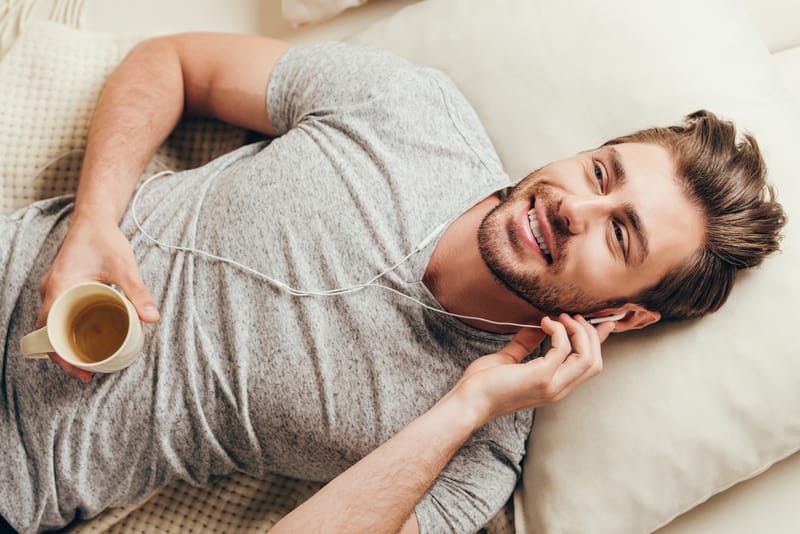Most of the time I’ve been sick, the doctor usually leaves me with a final instruction after diagnosis and prescription. The instruction is, “Please relax.” You need relaxation to live a healthy life. Stress is everywhere. Sometimes, it makes us anxious; other times, it leaves us depressed. When you can’t relax from anxiety, it’s time to massage the acupuncture points for relaxation.
In our world today, the chances of experiencing anxiety at one point in your life are high. Your symptoms may be mild, or it may be severe, in which case it still affects your daily life. Some common symptoms of anxiety that indicate that you need to relax include the feeling of panic or worry, restlessness, fatigue, muscle tension, irritation, nausea, and digestive issues.
Traditional Chinese Medicine (TCM) believes that some of our organs are responsible for negative emotions. The liver is responsible for anger; the lungs for sadness; and the kidneys for fear and surprise. During menstruation, for example, the liver is strained because blood is disturbed. So, the woman during this period is easily irritated and angry. Whenever you experience any of these emotions, which deprives you of your peace of mind, the right thing to do is to massage the right acupressure point.
In this article, I’ll show you four of the pressure points for relaxation and comfort that you need to massage to benefit your mental health.
How Can You Relax And Ease Tension With Pressure Points?
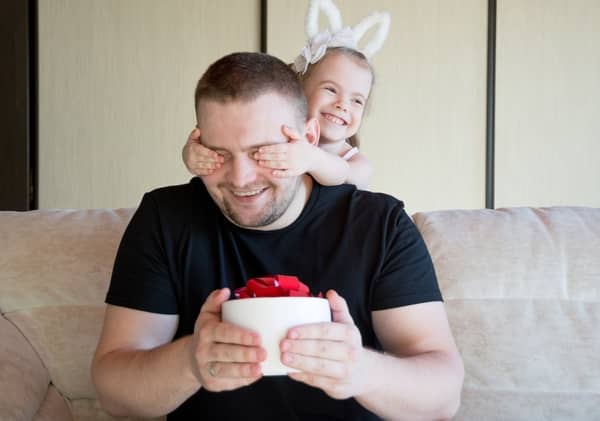
Pressure points are points along the various meridians in the body that, when massaged, enhance the energy flow in the body, boost blood circulation, and improve other bodily functions. Pressure points are the cornerstone of acupressure therapy and the effects of acupressure include reduction of muscle tension, improvement of circulation, and stimulation of feel-good hormones known as endorphins.
To effectively use the pressure points for relaxation, you have to first know them. After knowing them, you then have to learn to massage them properly. You can do this by yourself or with the help of someone experienced or an acupressure practitioner.
In this article, we’ll show you the right acupressure points for relaxation. Then to massage them yourself, apply firm and deep pressure on the points, but not too firm to hurt yourself. It’s best to start by applying gentle pressure then increase the pressure to a level you’re comfortable with. Massage in a clockwise motion with either the pads of your index or middle finger, your thumb, or your knuckle.
Also, take slow deep breaths as you massage the pressure points as this will activate the parasympathetic nervous system that offsets stress.
The Pressure Points For Relaxation
Below are the pressure points to massage to reduce stress and anxiety and help you relax.
Acupoint: GB-20 (Other Names: Gallbladder-20/Feng Chi/Wind Pool)
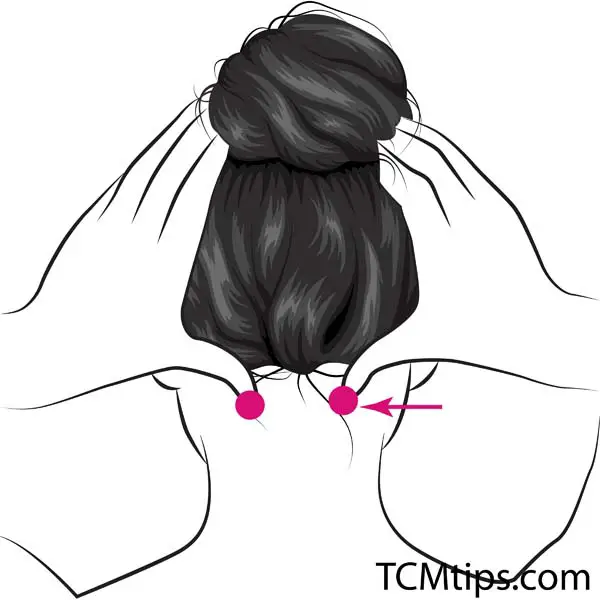
Acupoint GB-20 is one of the acupressure points for relaxation and comfort. This gall bladder meridian acupoint is referred to as Fengichi in Chinese, which translates to Wind Pool. To locate Fengchi, trace a finger to the back of your head. Stop at the point where the skull ends and the neck starts; at the depression beside the tendons of the trapezius muscle.
In TCM, GB-20 functions as an expeller or both interior and exterior wind. Thus, it is used to treat and wind pattern illness – whether cold or heat. This pressure point in the neck also benefits the eyes, ears, and nose, as well as brings relief to pain. Clinically, Fengchi is used to treat the common cold, headaches, dizziness, nasal congestion, and neck pain.
To active the healing benefits of GB-20, apply firm pressure on the acupoint for 5 to 10 seconds while breathing slowly and deeply. Do this 5 to five times and you’ll get the relief you need.
Acupoint: Liv-3 (Other Names: Liver-3/Tai Chong/Supreme Rush)
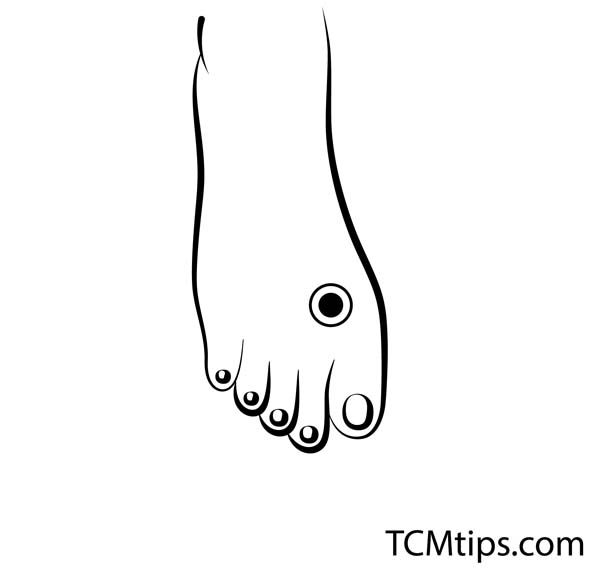
The next of the acupuncture points for relaxation is Liv-3. This acupoint is known as Taichong in Chinese or Great Surge in English. It is a liver meridian acupressure point located on the leg. You’ll find Liv-3 at the top of the feet, in the depression between the tendons of the big toe and second toe, where the first and second metatarsal bones meet.
The function of Taichong in TCM is to regulate the liver Qi, calm the Shen, and help menstruation. It is for this reason that this acupoint is used to treat irregular menstruation, headaches, swelling of the eyes, eye pain, abdominal distention, difficulty in walking, and depression. It is also one of the acupressure points for blocked fallopian tubes.
A 2016 research on patients with primary dysmenorrhea found that acupressure application on Liv-3 brings about anxiety relief to people suffering from such conditions. However, to benefit from Liv-3, massage the acupoint 2 to 5 times within an interval of 5 to 10 seconds. Breathe slowly and deeply while you massage.
Acupoint: PC-7 (Other Names: Pericardium-7/Da Ling/Great Mound)
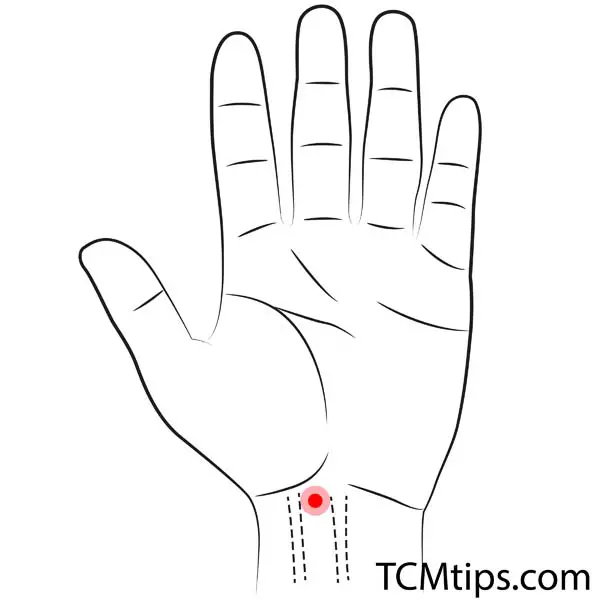
The next acupressure for relaxation is PC-7. It is called Daling in Chinese or Great Hill in English and is located at the wrist. PC-7 is very easy to locate. You’ll find it at the center of the crease in your wrist, directly above the centerline that descends down your palm.
Daling’s functions in TCM include calming the Shen, clearing the heat in the heart, regulating the heart Qi, and harmonizing the stomach. So, bringing relief to anxiety, clearing the feeling of nervousness, improving your sleep, and healing you of depression, PC-7 is also effective in treating gastric pain, chest pain, and vomiting.
Because of its location, PC-7 also serves as one of the acupressure points for numbness in the hands. All you have to do is massage this acupoint with your thumb for up to 5 minutes at 10-second intervals. Do this while you have your bath, and you’ll find how easy it is to relax.
Acupoint: GV-23 (Other Names: The Governing Vessel-23/Shang Xing/Upper Star)
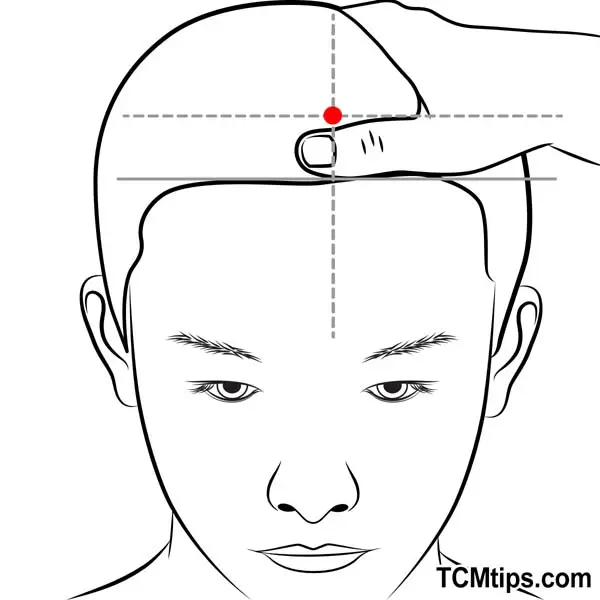
GV-23, Shangxing, or Upper Star is the acupressure point to stimulate when you’re nervous, and it seems like you can’t think clearly. This pressure point is located on your head, about a finger-width from your hairline into your hair, at the midline of your head.
Because of its location, GV-23 is responsible for treating issues of the eyes, opening the nose, and dispelling wind. This is the reason why this acupoint is effective in treating nasal congestion, headache, eye pain, and short-sightedness. GV-23 is also among the twelve acupressure points for vertigo.
Also, if you find that you can no longer distinguish foul smell from fragrance, or you have nasal obstruction or discharge that’s accompanied by headache, GV-23 is the right pressure point to stimulate.

Try our Anti-Aging Gua Sha Tool designed to bring out your skin’s natural glow.
Best Gua Sha Product- Anti-Aging: The tool is designed to target 11 specific aging signs such as wrinkles and sagging skin. By following the 7-step routine, users can improve skin firmness and reduce fine lines naturally.
- Enhances Skincare Routine: It works effectively with serums and lotions, boosting absorption and efficacy of skincare products.
- Visible Skin Improvement: Users can expect a smoother complexion, reduced puffiness, and a more youthful appearance.
 P. Sze
P. Sze 